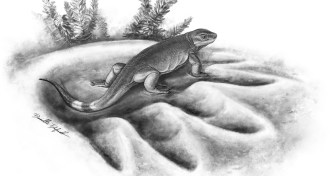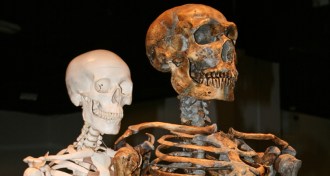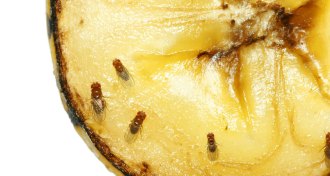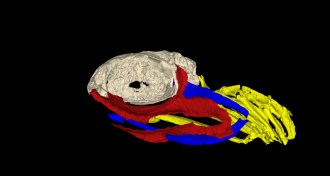Life
Sign up for our newsletter
We summarize the week's scientific breakthroughs every Thursday.
-
 Tech
TechTo do: Exhibits to explore this May in D.C. and New York
Events include a celebration of science and original watercolor paintings from John James Audubon.
-
 Neuroscience
NeuroscienceEven with rest, brain changes linked to football linger
The offseason may not allow enough time for football players' brains to heal from hard hits.
-
 Animals
AnimalsHow a chimp goes mattress hunting
Chimpanzees prefer firm beds made of ironwood, a new study finds.
-
 Paleontology
PaleontologyEarly meat-eater may have led to larger plant-eaters
The newly identified Eocasea martini may have set the stage for later, much larger animals to become plant-eaters.
-
 Genetics
GeneticsGene activity sets humans apart from extinct hominids
Differences in gene activity caused by DNA methylation distinguish modern people from Neandertals and Denisovans.
-
 Animals
AnimalsMost extreme female penis is found on cave lice
Female penis, male vagina have been discovered in tiny Brazilian insects.
By Susan Milius -
 Genetics
GeneticsDown’s syndrome goes beyond chromosome 21
A genetic analysis suggests that the DNA changes linked to Down's syndrome happen on all chromosomes, not just the 21st.
-
 Animals
AnimalsScent of a fruit fly larva comes from its gut microbes
Microbes in the guts of fly larvae produce smells that attract fruit flies.
By Susan Milius -
 Microbes
MicrobesOne giant leap for zit-causing microbes
A bacterium that lives on humans and causes acne also hopped to domesticated grapevines and relies on the plant for crucial DNA repairs.
-

-
 Neuroscience
NeuroscienceWhat’s behind rising autism rates
Better diagnosis may be driving a recent spike in autism.
-
 Life
LifeFind your inner fish with PBS series on human evolution
A new documentary explores how the human body came together over 3.5 billion years of animal evolution.